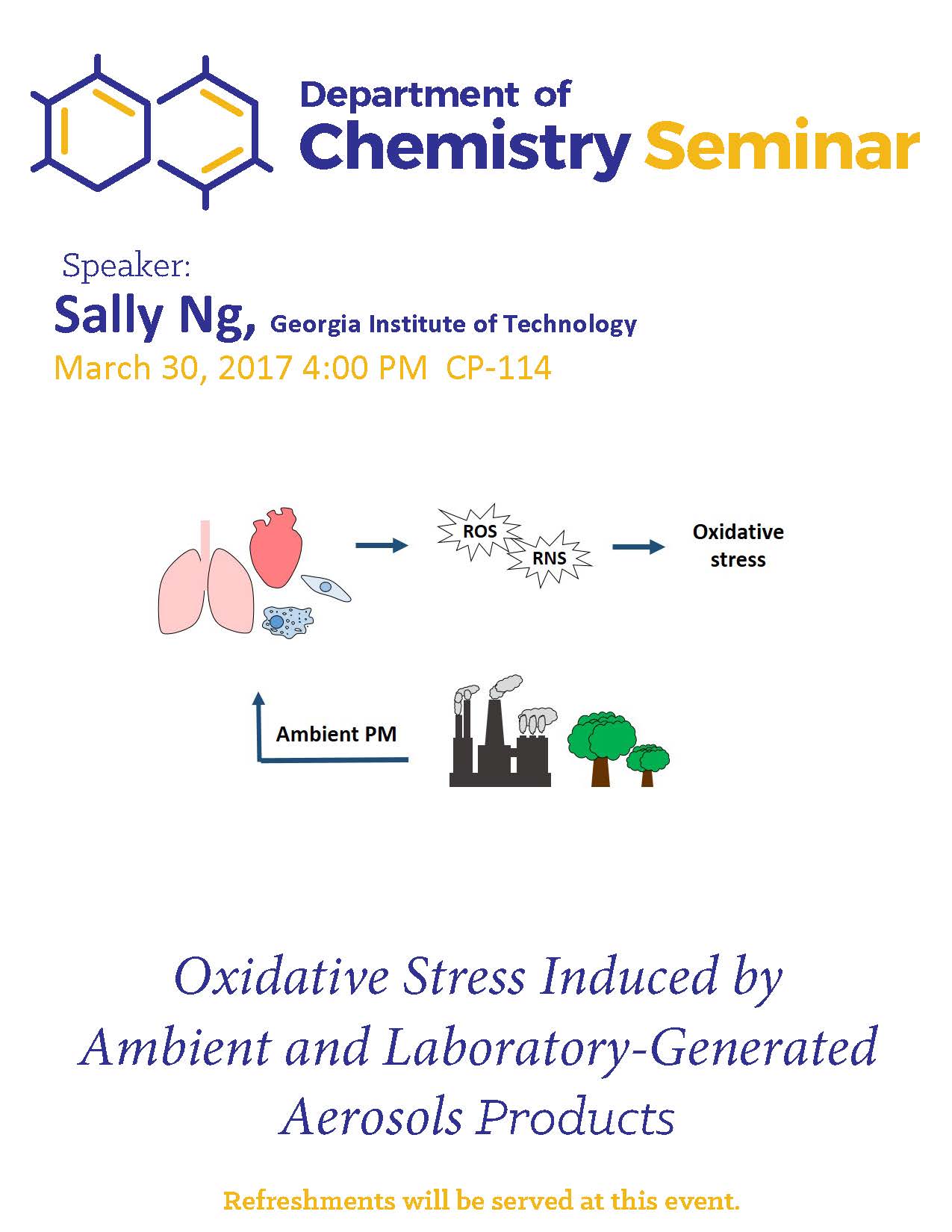Abstract:
Exposure to particulate matter pollution (PM, tiny particles suspended in air) ranks among the top ten global health risks. PM-induced oxidative stress has been suggested as a possible mechanism leading to their health effects. We conducted cellular and acellular measurements of PM-induced oxidative stress through systematic laboratory experiments and ambient field studies. Murine alveolar macrophages were used to measure intracellular reactive oxygen and nitrogen species (ROS/RNS) production, while dithiothreitol (DTT) was used to measure the chemical oxidative potential for each sample. Ambient samples (n = 104) were collected during multiple seasons from rural and urban sites around the greater Atlanta area as part of the Southeastern Center for Air Pollution and Epidemiology (SCAPE). For laboratory studies, SOA were generated from photooxidation of six commonly emitted volatile organic precursors, including isoprene, α-pinene, β-caryophyllene, pentadecane, m-xylene, and naphthalene. Laboratory experiments were conducted in the Georgia Tech Environmental (GTEC) facility under different conditions. For both ambient and laboratory samples, we found that cellular ROS/RNS production was highly dose-dependent, non-linear, and could not be represented by a single concentration measurement. For chemical oxidative potential, precursor identity influenced toxicity significantly, with isoprene and naphthalene SOA having the lowest and highest response, respectively. Both precursor identity and formation conditions influenced inflammatory responses. Several response patterns were identified for SOA precursors whose photooxidation products share similar carbon chain length and functionalities. A significant correlation between ROS/RNS levels and aerosol carbon oxidation state was also observed, which may have significant implications as ambient aerosols have an atmospheric lifetime of a week, over which oxidation state increases due to photochemical aging, potentially resulting in more toxic aerosols.

